1
The story of steamboats on the upper Peace River (all of the Peace River upstream from the Vermilion Chutes) begins with the Oblates and the S.S. St. Charles. The Oblates (Mission Oblates of Mary Immaculate) were the main Roman Catholic missionary agency in western and northern Canada, establishing several missions on the Peace, Athabasca and Mackenzie river systeams beginning in the second half of the 19th Century. In their efforts to establish missions on these rivers the Oblates were heavily dependant on the Hudson's Bay Company for the transportation of their supplies and order members. By the 1880s the Oblates had several concerns about this dependence, including: rate increases for shipping in the 1880s and 1890s; a lack of reliability on the part of the Hudson's Bay Company; and the need of a transportation system that would better serve the Oblates in their operations.The result of these concerns was the creation of what would be called the "mission boats" by Bishop Emile Grouard, the Vicar Apostolic of Athabasca-Mackenzie. As conceived by Grouard the "mission boats" were to:
1) provide a transportation system that would allow Oblates such as Bishop Grouard easy and efficient access to their missions. The boats would follow a schedule set by the Oblates and could, for example, remain at a mission until their tasks were completed.
2) generate revenue by providing passenger and freight service, revenue that would help to support the operations of the Oblates.
2
Bishop Emile Grouard.Early 20th Century
Grouard, Alberta, Canada
 Credits:
Credits:Alberta Historic Sites, Reference Collection
3
The first of the "mission boats" built by the Oblates was the Saint-Joseph, built at the Nativity Mission on Lake Athabasca in 1893. The area covered by the Saint-Joseph included Lake Athabasca, the Athabasca River to Fort McMurray and the Slave River to Fort Fitzgerald. The Saint-Joseph also travelled to the Hudson's Bay Company post at Red River on the lower Peace River. The boat was obstructed from travelling further west on the Peace River by the presence of the Vermilion Chutes. Oblate travellers would have to portage the Chutes and travel further by transfer to another boat, such as the S.S. St. Charles.4
The S.S. St. Joseph on the Athabasca River.Early 20th Century
Athabasca River, Alberta, Canada
 Credits:
Credits:Provincial Archives of Alberta, A7389
5
In 1894 the Oblates added the Saint-Alphonse, another steamboat, for travel on the Mackenzie River from Fort Smith.6
S.S. St. Alphonse.Early 20th Century
Mackenzie River, North West Territories, Canada
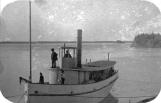 Credits:
Credits:Provincial Archives of Alberta, Oblate Archives, OB 7293
7
In 1902-3 the Oblates added a small steamboat, the Saint-Emile, for operation on Lesser Slave Lake.8
S.S. St. Emile on Lesser Slave Lake.Circa 1902-1910
Lesser Slave Lake, Alberta, Canada
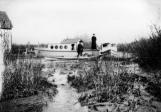 Credits:
Credits:Provincial Archives of Alberta, Oblate Collections, OB 12005
9
Part of the vision of the "mission boats" idea of Bishop Grouard was the addition of a steamboat to operate on the upper Peace River. The site for the construction of this boat and its home for its operation was the St. Augustine Mission on the Shaftesbury Trail near Peace River Crossing.10
St. Augustine Mission.Circa 1928-1950
St. Augustine Oblate Mission, Shaftesbury Settlement, near Peace River, Alberta, Canada
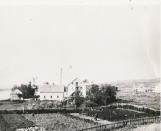 Credits:
Credits:Peace River Museum, Archives & Mackenzie Centre 75.656.017
11
One of the reasons for the construction of the steamboat at the St. Augustine Mission was the presence of a saw mill there as well as members of the Oblates who had considerable construction experience.12
The saw mill at the St. Augustine Mission.circa 1903
St. Augustine Oblate Mission, Shaftesbury Settlement, near Peace River, Alberta, Canada
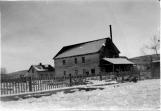 Credits:
Credits:Missionary Oblates, Grandin Collection at the Provincial Archives of Alberta, OB 13491
13
In 1902 the steam engine and boiler for the St. Charles were purchased by the Oblates from a company in Peterborough, Ontario. These components were shipped to the St. Augustine Mission via the Grouard and Athabasca Landing Trails from Edmonton. The wooden hull was built by the Oblates themselves at the Mission and using the saw mill there. The Oblates were experienced builders who had erected a number of buildings on the Peace River. It is not known if a boat builder was employed in addition to the Mission staff.The end-product of the construction was a modest 60 foot long steam launch employing a screw propeller (in contrast to the larger steam wheelers to follow). As a boat it was capable of taking on passengers and freight but cargo space was limited and it lacked passenger berths. The St. Charles was launched in May of 1903 and was named after the Oblate founder, Saint Charles Joseph Eugene de Mazenod. The function of the lauch was multi-fold: it carried Oblates such as Bishop Grouard from mission to mission on the Peace River and connected with the Saint-Joseph at the Vermilion Chutes for the transfer of freight and passengers but it also served as a commerical operation in that it took paid passengers and loads.
The appearance of the St. Charles was clearly a surprise to the Hudson's Bay Company who quickly built the S.S. Peace River (launched in 1905) to compete.
14
The S.S. St. Charles.1906
Peace River Crossing, Alberta, Canada
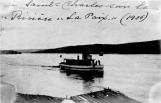 Credits:
Credits:Missionary Oblates, Grandin Collection at the Provincial Archives of Alberta, OB 13501